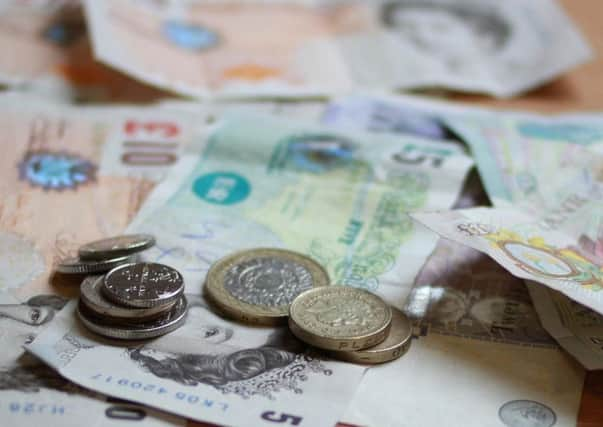Figures reveal average incomes in region


The average Yorkshire disposable income in 2015 was £16,267 compared to £21,808 in the South East and £25,293 in London.
The official statistics show disposable incomes in Yorkshire grew by 2.9 per cent between 2014 and 2015, only marginally more than London and the South East where they increased by 2.7 and 2.8 per cent respectively.
Advertisement
Hide AdAdvertisement
Hide AdAccording to the data, Hull was among the bottom 10 areas nationally with the lowest average disposable incomes with a figure of £13,642 while Kensington, Chelsea, Hammersmith and Fulhamm topped the list with £52,298.
In Yorkshire, Craven residents saw their spending power rise fastest with a 7.3 per cent increase between 2014 and 2015 while the slowest rate of growth was found in Barnsley at 0.7 per cent.
Across the UK, average disposable incomes grew by 2.9 per cent to £19,106.
The Resolution Foundation said its analysis suggested the gap between the richest and poorest districts in the country had grown by 2.8 per cent since 2007.
Advertisement
Hide AdAdvertisement
Hide AdMatt Whittaker, chief economist at the Resolution Foundation, said: “Today’s figures show that while the gap between rich and poor households has been flat or falling since the financial crisis, inequality across different parts of the country has been rising.
“This should remind us all that when it comes to living standards, geography matters.
“Strong economic growth is desirable, but insufficient if the living standards boost it delivers is confined to London, the South East and a few other cities. Now, more than ever, we must prioritise strong, shared growth that reaches households in areas throughout Britain.”
A new report from the TUC suggests wages have still not recovered from the financial crisis.
Advertisement
Hide AdAdvertisement
Hide AdUnsecured household debt, which includes credit cards and car loans but not mortgages, will reach a record high of £13,900 per household this year and will exceed £15,000 by 2020, according to research by the union organisation.
General secretary Frances O’Grady said: “The surge in household debt is putting the economy in the danger zone.
“We’ve got this problem because wages haven’t recovered. Credit cards and payday loans are helping to prop up household spending for now, but millions of families are running on empty.
“The next government must act urgently to deliver the higher wages Britain needs for sustainable growth. They must boost the minimum wage, and end pay restrictions for public servants like nurses, firefighters and midwives.
Advertisement
Hide AdAdvertisement
Hide Ad“A lot more government support is needed for the parts of Britain where well-paid jobs are in short supply.
“Communities that lack good jobs today could thrive tomorrow if they get proper investment in training, transport links, broadband and decent housing.”